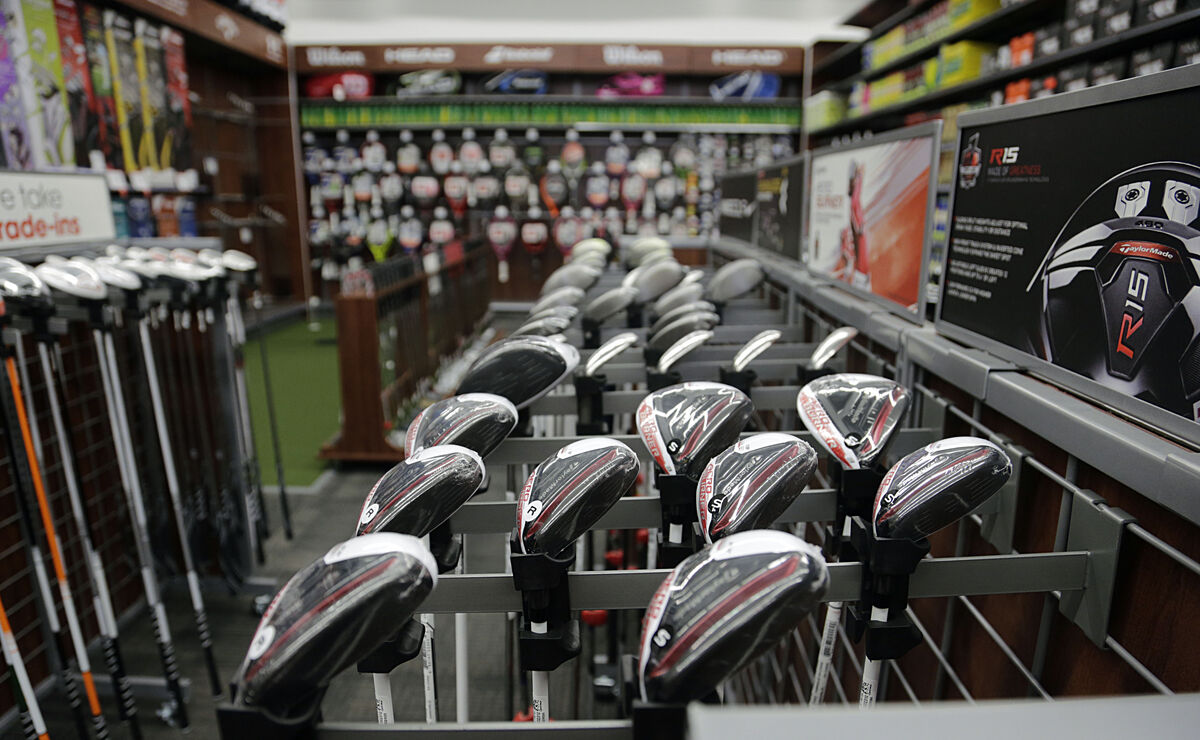Why Shaft Flex Matters More Than You Think

If you’ve ever wondered why two players can hit the same club and get wildly different results, the answer might be in the shaft flex. Shaft flex refers to how much a golf club’s shaft bends during the swing. Too stiff or too soft, and your shots can lose distance, fly off‑line, or feel awkward in your hands.
Many golfers, especially beginners, focus only on clubhead design or brand name—but choosing the correct shaft flex is just as crucial for performance. The wrong flex can lead to inconsistent ball flights, poor contact, and even long‑term swing issues.
This article will explain how to choose golf club shaft flex step by step. We’ll break down the difference between stiff vs regular flex, how swing speed and skill level impact your choice, and what the best shaft flex for beginners looks like. Think of it as your ultimate golf club fitting guide to picking the shaft that actually matches your game.
Understanding Shaft Flex: The Basics Explained

Before you can choose the right shaft, you need to know what “flex” actually means. Simply put, shaft flex measures how much the shaft bends during your swing. Manufacturers typically categorize flex into these main types:
- Extra Stiff (X) – for very high swing speeds (usually 110+ mph).
- Stiff (S) – for faster players, often 95–110 mph.
- Regular (R) – the most common, designed for average swing speeds (85–95 mph).
- Senior (A or M) – for slower swings, often 75–85 mph.
- Ladies (L) – for very smooth, lower‑speed swings.
Understanding these categories is the foundation of golf shaft flex explained. Choosing correctly isn’t just about ego—it’s about matching your swing to the club so you get the most distance, control, and feel.
Signs You’re Using the Wrong Shaft Flex
Many golfers don’t realize they’re using a shaft that doesn’t match their game. But your shots will tell you if your flex is off.
If your shaft is too stiff, you might notice:
- Low ball flight that feels hard and “board‑like.”
- Shots leaking to the right (for right‑handed golfers).
- A lack of distance despite solid contact.
If your shaft is too flexible, you might see:
- Ballooning ball flights that lose distance.
- Hooks or big left misses (for right‑handers).
- A “whippy” or unstable feeling during the swing.
Recognizing these signs is essential when learning how to choose golf club shaft flex. Your swing shouldn’t have to compensate for your equipment—your equipment should support your natural motion.
Stiff vs Regular Flex: What’s the Real Difference?
Golfers often ask whether they should play stiff vs regular flex. The difference is more than just how the shaft feels—it affects launch angle, spin, and shot dispersion.
- Stiff flex shafts are harder to bend, which makes them ideal for players with faster swing speeds who generate a lot of power. They tend to keep shots lower with less spin.
- Regular flex shafts bend more, helping players with moderate swing speeds launch the ball higher and maintain distance.
The key factor is swing speed. As a general rule:
- If your driver swing speed is 95+ mph, stiff might be for you.
- If it’s 85–95 mph, regular is likely the better choice.
This isn’t just about raw power; it’s about how the club loads and releases energy. Picking the wrong option can leave your shots inconsistent, which is why every golf club fitting guide stresses this decision.
How Swing Speed and Tempo Influence Shaft Flex
Choosing the right shaft isn’t only about how fast you swing—it’s also about how you swing.
Players with quick, aggressive tempos often benefit from stiffer shafts, even if their overall swing speed is moderate, because a softer shaft might feel unstable.
Players with smooth, gradual swings might do better with a more flexible shaft, which allows the club to “load” properly and release energy into the ball.
The best approach is to measure your swing speed—either with a launch monitor at a golf store, a fitting session, or even affordable personal devices. Combining that data with an honest assessment of your swing rhythm makes choosing the right shaft much easier.
Best Shaft Flex for Beginners: What New Golfers Should Know
If you’re new to the game, you might wonder what the best shaft flex for beginners is. In most cases, beginners benefit from regular or even senior flex shafts, depending on age and athleticism.
Why? Beginners usually have slower swing speeds and less consistent contact. A shaft with more flex can help launch the ball higher and make the club feel more forgiving.
But this doesn’t mean every new golfer should automatically buy “Regular.” Some beginners are naturally strong or athletic and might need stiff to avoid ballooning shots. The key is to start with a fitting session or at least test different shafts before committing.
Steel vs Graphite Shafts: Does It Affect Flex Choice?
When thinking about how to choose golf club shaft flex, you also need to consider shaft material.
- Steel shafts are heavier, provide more control, and are usually preferred by experienced players. They generally come in stiffer flex profiles.
- Graphite shafts are lighter, easier to swing, and better for generating speed. Many best shaft flex for beginners recommendations lean toward graphite, as it helps launch the ball higher.
Your material choice impacts how the flex feels. A stiff graphite shaft may still feel softer than a stiff steel shaft. That’s why a proper golf club fitting guide looks at both material and flex together.
How to Get Professionally Fitted for Shaft Flex

The most reliable way to pick the right shaft is a professional fitting. A fitter uses launch monitors to measure swing speed, ball speed, launch angle, and spin rates.
From there, they’ll recommend specific shaft flexes (and even models) that match your swing. Many golf retailers and club manufacturers offer this service—and it’s worth every penny.
If you can’t get fitted, you can still test clubs at a driving range or simulator. Pay attention to ball flight and how the club feels at impact. That feedback is your personal golf club fitting guide when professional help isn’t available.
Common Mistakes Golfers Make When Choosing Shaft Flex
Even experienced players make errors when selecting shafts. Here are the biggest traps to avoid:
- Choosing based on ego – Many golfers insist on “stiff” because it “sounds better,” even if it hurts their game.
- Ignoring tempo – Swing rhythm matters just as much as raw speed.
- Mixing unmatched shafts – Playing a stiff driver but senior‑flex irons creates inconsistency.
Avoiding these mistakes ensures your shaft choice truly supports your swing instead of working against it.
Step-by-Step Summary: How to Choose Golf Club Shaft Flex
1. Measure your swing speed. Use a launch monitor or get fitted.
2. Assess your swing tempo. Aggressive? Smooth? This influences flex choice.
3. Match flex to data. Stiff for faster swings, regular or senior for moderate/slower swings.
4. Test steel and graphite. Material affects feel and performance.
5. Get fitted if possible. A pro fitter removes guesswork.
6. Check ball flight. If shots are ballooning or flying low/right, adjust flex accordingly.
Following these steps ensures you don’t just guess—you make an informed decision with your swing and your game in mind.
The Right Shaft Flex Can Transform Your Game
Choosing the right golf shaft flex isn’t just for pros—it’s essential for every golfer. The wrong flex makes the game harder than it needs to be; the right one makes your swing feel effortless and your shots more consistent.
By understanding the basics of golf shaft flex explained, testing stiff vs regular flex, and following a clear golf club fitting guide, you’ll eliminate confusion and find the best shaft flex for beginners or seasoned players alike.
Next time you pick up a club, think beyond the brand name. Think about how it bends, how it feels, and how it matches your swing. When you do, you’ll stop fighting your equipment—and start playing better golf.





.png)



.jpg)

.jpg)


.png)

